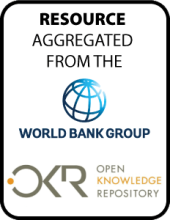Land Library
Welcome to the Land Portal Library. Explore our vast collection of open-access resources (over 74,000) including reports, journal articles, research papers, peer-reviewed publications, legal documents, videos and much more.
/ library resources
Showing items 55 through 63 of 486.Megacity Dhaka encounters various kinds
of natural disasters quite frequently owing to its
geographical location and a number of other physical and
environmental conditions including low topography, land
Despite myriad challenges, Kenya has emerged in recent years as one of Africa’s frontier economies, with headline growth in the most recent decade propelling the country toward middle-income status.
The systematic country diagnostic (SCD)
is designed to identify the most critical binding
constraints and opportunities facing Indonesia in ending
extreme poverty and boosting shared prosperity. In line with
Mauritius has been a success story since
independence, moving from low income to uppermiddle-income
status. Close public-private partnerships facilitated
private sector-led growth in astable macroeconomic and
Situated in a fertile low-lying river
delta, Bangladesh combines high vulnerability to floods,
tropical cyclones, earthquakes, and climate change with one
of the world’s highest population densities, with around 159
Maldives is an island nation scattered
in the Indian Ocean comprising 1,190 small coral islands of
which 190 are inhabited by a local population of 341,000.
Maldives’ unique archipelagic coral island provides the
Between 2002 and 2012-13, most of the
reduction in poverty was due to increased earnings, as
opposed to higher employment or higher transfers. Although
it is hard to be certain, increases in earnings are
This module provides guidance and a
comprehensive menu of practical tools for integrating gender
in the planning, design, implementation, and evaluation of
projects and investments in climate-smart agriculture (CSA).
This reports focus is making global
value chains (GVCs) more inclusive. This is achieved by
overcoming participation constraints for Small and Medium
Enterprises (SMEs) and facilitation access for Low Income


